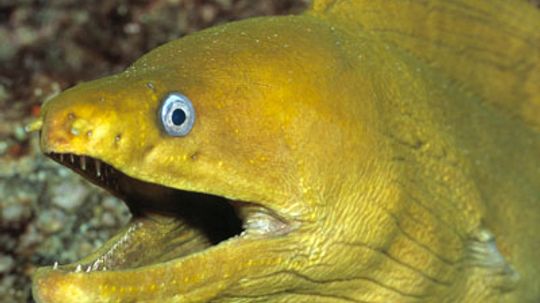Unraveling the Mystery Behind Their Elusive Nature
Aquatic Sleuths: Investigating the Slippery Secrets
Eels, those enigmatic creatures that gracefully glide through water with an almost ethereal presence, have long captivated the curiosity of scientists and nature enthusiasts alike. However, one question has persistently eluded our understanding: why are eels so remarkably slippery?
Intriguingly enough, this seemingly simple query conceals a complex web of scientific intricacies waiting to be untangled. To delve into this captivating mystery, we must embark on a journey through the realms of biology and physics.
Firstly, it is essential to comprehend that eel skin possesses a unique composition unlike any other aquatic creature. The outer layer consists primarily of mucus-producing cells known as goblet cells. These specialized structures secrete copious amounts of slime-like mucus when stimulated or threatened – providing eels with their legendary slipperiness.
Moreover, this slimy secretion serves multiple purposes beyond mere locomotion facilitation. It acts as a protective shield against parasites and bacteria while simultaneously reducing frictional drag in water – enabling these elusive creatures to navigate swiftly through their watery habitats.
The Evolutionary Advantage: Adaptations for Survival
The evolutionary significance behind eel slipperiness becomes apparent when considering their natural environment and survival strategies honed over millions of years. Inhabiting diverse aquatic ecosystems ranging from freshwater rivers to deep-sea trenches demands exceptional adaptations for both offense and defense.
By being incredibly slippery, eels gain several advantages in evading predators or capturing prey effectively. When pursued by larger fish or marine mammals seeking an easy meal, their slippery exterior makes it arduous for predators to maintain a firm grip. This allows eels to swiftly escape into crevices or burrow themselves in the safety of sand and mud.
Furthermore, this slipperiness aids eels during hunting endeavors. Their ability to stealthily approach unsuspecting prey without causing ripples or disturbances is enhanced by their slimy coating – granting them an element of surprise that ensures successful ambushes.
A Slippery Enigma: The Physics Behind Eel Locomotion
The physics behind eel slipperiness unravels yet another layer of intrigue surrounding these captivating creatures. As they propel themselves through water using undulating movements known as anguilliform locomotion, the mucus secreted from their skin reduces drag forces acting against them.
This reduction in drag enables eels to conserve energy while swimming efficiently over long distances – a crucial adaptation for their migratory behavior spanning thousands of kilometers. By minimizing resistance, they can navigate through various aquatic environments with minimal effort and maximize their chances of survival.
In Conclusion: A Slippery Symphony of Adaptations
Eels’ remarkable slipperiness emerges as a symphony orchestrated by evolutionary adaptations and intricate biological mechanisms. Their unique composition not only facilitates swift movement but also provides protection against pathogens and enhances predatory prowess.
As we continue our exploration into the depths of nature’s mysteries, let us marvel at the enigmatic world inhabited by these slippery denizens who have mastered the art of aquatic elegance like no other creature on Earth.



